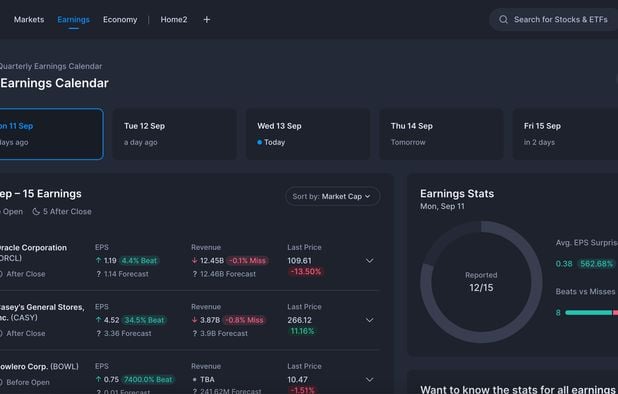20 Best Suggestions For Picking AI Stock Trading Sites
20 Best Suggestions For Picking AI Stock Trading Sites
Blog Article
Top 10 Ways To Evaluate The Security And Security Of Ai Trading Platforms
Security and privacy of trading platforms that are based on AI are crucial, as they handle personal and financial data. A breach or misuse of information can result in significant financial losses and reputational harm. These are the top 10 suggestions to assess the security and security of these platforms:
1. Evaluate Data Encryption
Secure transmission of data: Make sure that the service you are using is secure and uses protocols to encrypt your data as it's transferred between their servers and the device (e.g. TLS/SSL).
Security at rest: Confirm that the sensitive information stored on the platform's servers is secured with strong encryption standards (e.g. AES-256, for example.).
Verify that your security is end-to-end This is an absolute must for anyone who wants to safeguard sensitive communications or data.
2. Assess Authentication Methods
Two-factor verification (copyright) Verify that the platform is compatible with copyright for an added layer of protection.
Check for biometric authentication.
Password policy: Examine to find out if your provider has strict rules regarding passwords.
3. Check for Compliance
Financial regulations: Ensure platform is in compliance with the applicable financial regulations (e.g. SEC, FINRA or MiFID II).
Laws on data protection. Verify compliance with the laws governing data privacy in your area (e.g. CCPA, GDPR) If applicable.
Audit certifications: Determine if the platform has undergone audits of security by third parties or has certifications (e.g., SOC 2, ISO 27001).
4. Review Data Access Controls
Role-based access: Ensure that the platform has roles-based controls (RBAC) that restricts access to data only to authorized users.
Verify whether you can assign permissions on a granular level for various team members.
Activity monitoring Check to see whether your platform keeps track of and monitors user's activities.
5. Examine the vulnerability management
Regular updates: Update the software regularly to ensure it's always current.
Penetration testing: Determine that the platform has been subjected to regular penetration testing to identify and fix security weaknesses.
Programs for bug bounty: Check whether the platform offers bugs bounty programs to incentivize external security researchers to identify security holes.
6. Evaluate Data Privacy Policies
Transparency Review the platform privacy policy to find out the ways in which your personal data is collected, used, or shared.
Data minimization is the method to ensure that only the information needed for the functionality of a platform is collected by the platform.
Third-party sharing: Find out if your platform shares information with third parties If it does, what are the conditions.
7. Secure API Utilization is Checked
API security: Make sure the API of the platform API utilizes secure authentication methods (e.g., OAuth, API keys) and also encrypts data exchanges.
Rate limit: Make sure to check if there are rate limits in the API to deter brutal force attacks or misuse.
Check for access logs. The platform should record API usage and access to audit and monitor.
8. Assess the Recovery and Response to Incidents
Plan for response to an incident: Make sure the platform has a solid plan for handling security breaches and data breaches.
Review the platform's notification policy to see if it notifies its users promptly when there's a breach of security.
Review the backups of your data and disaster recovery plans.
9. Evaluate Physical Security Measures
Security of the data center Check that the servers of your platform are in data centers that are equipped with physical security measures like surveillance and access controls.
Redundancy Check the redundant systems of the platform to ensure data availability if the hardware fails.
Geographic distribution: Ensure that the data is distributed to several locations in order to increase resilience.
10. Examine the privacy controls of your users
Data deletion: Make sure the platform will allow you to erase your personal data for good if you cease using the service.
Privacy settings: Make sure the platform has privacy settings to allow you to control which data is visible or shared.
Verify the data's anonymity for analytics and machine learning.
Bonus Tips:
Review and feedback of users to evaluate the platform's security and privacy.
Trial period: Try the demo or trial version for free to test the platform's privacy and security features.
Customer support: Make sure that you have a reliable support system in the event of security-related concerns or issues.
You can assess the security, privacy, and accuracy of AI trading platforms for stocks by following these guidelines. This will ensure that your financial data and personal information are secure. Secure platforms not only secures your assets, it can also build trust and confidence in its products and services. View the most popular our website for blog info including ai for stock predictions, investing ai, AI stock trading app, AI stock picker, ai investment platform, AI stock trading bot free, AI stock picker, best AI stock trading bot free, investing ai, stock ai and more.
Top 10 Tips For Risk Management Of Ai Trading Platforms That Forecast Or Analyze Stock Prices
Risk management is a vital component of any AI trading platform that predicts or analyzes stocks that helps safeguard your investment and limit potential losses. A platform with strong risk management tools can help you navigate uncertain markets and make educated decisions. Here are 10 tips on how you can evaluate the risk management capabilities of the platform.
1. Review Stop-Loss and take-profit features
A level that is customizable: You must be able customize the levels of take-profit and stop-loss for individual trades and strategies.
Find out if you can utilize trailing stops. They automatically adjust as market conditions shift towards your advantage.
Make sure your platform allows you to put stop-loss order that ensure the close of your trade at the price specified, even on unstable markets.
2. Assess Position Sizing Tools
Fixed amount: Ensure that your platform allows you to create positions based on a certain amount of money that is fixed.
Percentage portfolios: Discover how risk can be controlled in a proportional way by setting your portfolios as a percentage of your portfolio.
Risk-reward ratio: Check whether you are able to set the risk-reward percentage for specific trades or strategies.
3. Look for Diversification Support
Multi-asset trading: Make sure the platform supports trading across multiple types of assets (e.g., ETFs, stocks, options, forex) to diversify your portfolio.
Sector allocation check to see whether there are any tools available for managing and monitoring exposure to the sector.
Diversification in geography. Examine if your platform allows you to trade on international markets. This will assist in spreading the risk of geographic.
4. Review leverage control and margins.
Margin requirements: Make sure the platform clearly states the requirements for margin for leveraged trading.
Find out whether you are able to set limit on leverage to limit the risk you take.
Margin Calls: Ensure that the platform sends out prompt notifications of margin calls to prevent the liquidation of your account.
5. Review the risk Analytics Reporting
Risk metrics. Make sure that your platform has key risk indicators (e.g. VaR, Sharpe Ratio, Drawdown) relevant to the portfolio you are managing.
Scenario assessment: See whether you are able to simulate different market scenarios using the platform to assess the potential risk.
Performance reports: Ensure that the platform offers you comprehensive reports on performance, including returns that are risk-adjusted.
6. Check for Real-Time Risk Monitoring
Monitoring your portfolio: Make sure the platform allows real-time monitoring of your portfolio's risk exposure.
Alerts: Check if you can receive real-time notifications for at risk (e.g. Stop-loss triggers, breach of margins).
Check the dashboards for risk. If you're looking to see a complete picture of your risks, be sure that they are customizable.
7. Assess Stress Testing and backtesting
Stress testing. Make sure that the platform allows you to test your portfolio or strategy in extreme market conditions.
Backtesting: Check if the platform supports backtesting of strategies using old data to gauge the risk and effectiveness.
Monte Carlo Simulations: Check if the platform utilizes Monte Carlo simulations in order to analyze and predict various possible outcomes.
8. Risk Management Regulations - Assess Compliance
Ensure that the platform meets the requirements for regulatory compliance (e.g. MiFID II regulations in Europe, Reg T regulations in the U.S.).
Best execution : Examine to see if your platform follows best execution procedures. This guarantees that trades will be executed at the highest possible price, minimising the chance of slippage.
Transparency. Verify that the platform is transparent and makes clear disclosures of potential risks.
9. Check for User-Controlled Parameters
Custom risk rules: Ensure the platform allows you to create custom risk management guidelines (e.g., maximum daily loss, maximum position size).
Automated Risk Controls: Find out if the platform is able to automatically enforce risk management policies in accordance with predetermined parameters.
Manual overrides: Make sure that your platform allows manual overrides in emergencies.
Reviews of User Feedback and Case Studies
User reviews: Review feedback from users to assess the effectiveness of the platform's managing risk.
Case studies: Search for cases studies or testimonials that highlight the risk management capabilities of the platform.
Community forums. Check to see whether the platform has a vibrant user-based community where traders share risk management strategies and advice.
Bonus Tips
Free trial period: Experience the risk management functions of the platform in real-world scenarios.
Customer support: Check whether the platform offers solid support for questions or concerns relating to risk management.
Educational resources: Find out whether your platform has instructional materials or tutorials that provide information on risk management techniques.
Check out these suggestions to determine the risk-management capabilities of AI trading platforms that predict/analyze the prices of stocks. Select a platform that has an excellent degree of risk management, and you will minimize your losses. Risk management tools that are durable are essential for trading in volatile markets. See the top rated AI stock prediction blog for blog advice including investing with ai, free AI stock picker, free ai tool for stock market india, ai share trading, AI stock predictions, AI stock prediction, ai investment tools, stocks ai, ai options trading, trading ai tool and more.